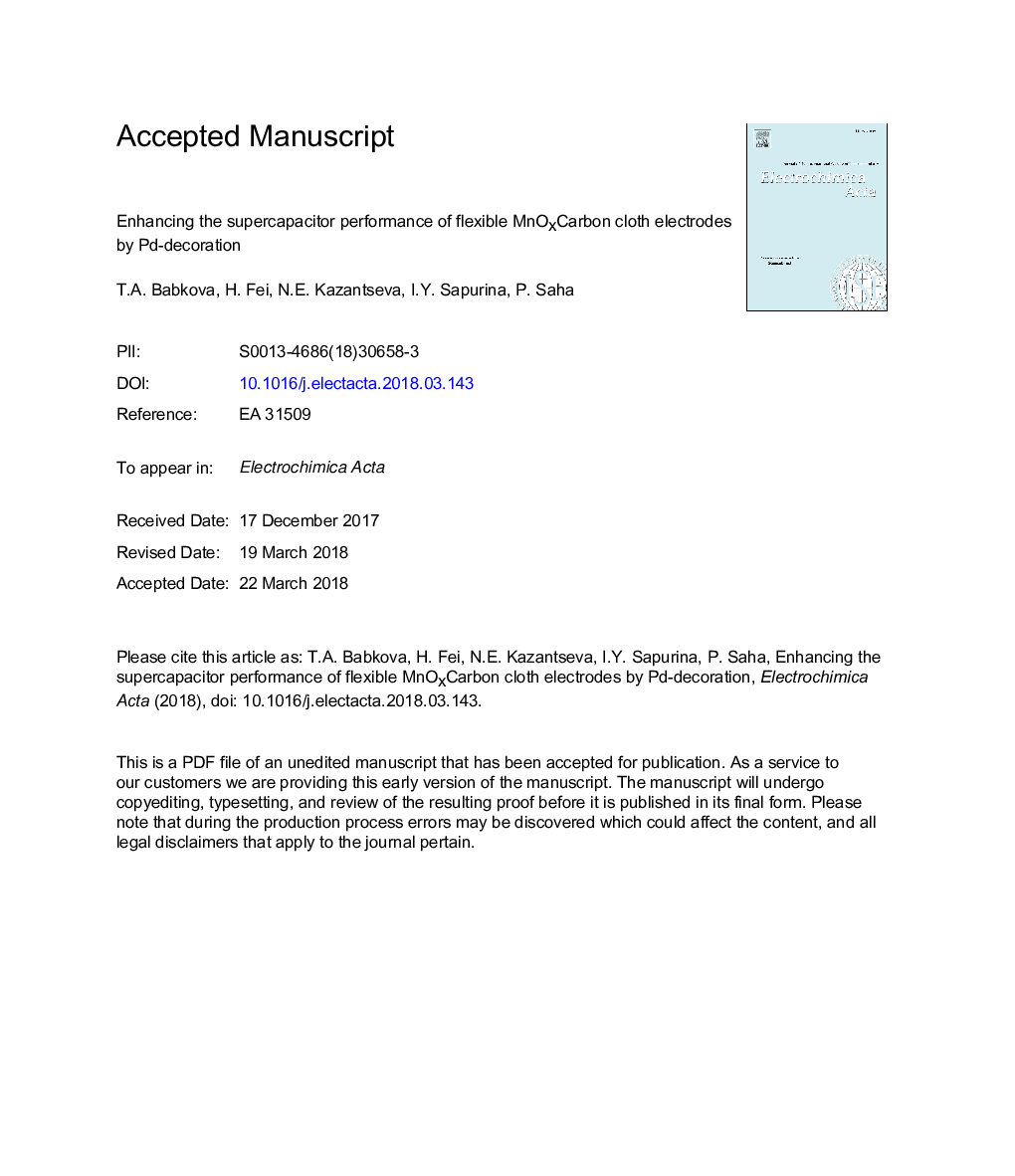| Article ID | Journal | Published Year | Pages | File Type |
|---|---|---|---|---|
| 6603124 | Electrochimica Acta | 2018 | 28 Pages |
Abstract
Manganese oxide (MnOx)-based hybrid electrode materials have been designed by electrochemical deposition on carbon cloth preliminary activated by palladium (Pd) nanoparticles. The synthesis conditions (current density, deposition time) were chosen in such a way as to achieve a stable structure of MnOx with a large surface area. The structural parameters and surface morphology of materials obtained are characterized by Scanning Electron and Transmission Electron Microscopy (SEM, TEM), Raman spectroscopy, X-ray Photoelectron Spectroscopy (XPS), etc. The electrochemical behavior was investigated by cyclic voltammetry, galvanostatic charge/discharge and impedance spectroscopy. The attained results indicate that MnOx deposits reviled birnessite-type structural feature. Apart from that, the morphology of MnOx transformed with increasing of current density from needlelike structure to loosely-packed thin sheets and then to closed-packed thicker sheets structures. Different morphology exhibits different specific surface area and electrochemical efficiency. Hence electrochemical analysis reviled the highest specific capacitance (186â¯Fâ¯gâ1) and cyclic stability for MnOxPdCC with obtained at current density of 1â¯mAâ¯cmâ2. It can be explained by the formation of a less dense structure of MnOx (loosely-packed thin sheets) with large specific surface area and thus better permeability for Na+ and SO4â2 ions. As to the role of Pd, its nanoparticles deposited on CC can play a dual role, namely electron conducting passway between CC and MnOx and structure-guiding agent of manganese oxides nucleation and grows.
Related Topics
Physical Sciences and Engineering
Chemical Engineering
Chemical Engineering (General)
Authors
T.A. Babkova, H. Fei, N.E. Kazantseva, I.Y. Sapurina, P. Saha,
